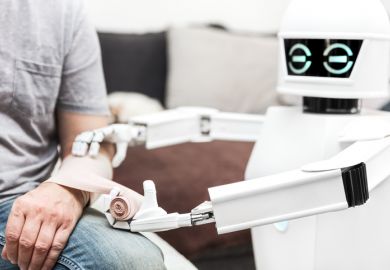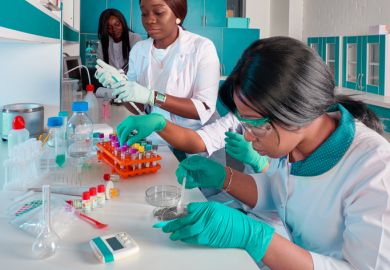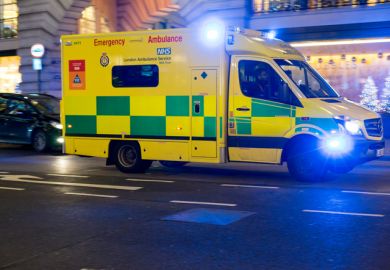With little expectation that even a change of government will significantly relieve the UK’s beleaguered universities, we need to think seriously about how we can manage better with what we have.
In medicine, we have talked for years about cost-effective treatments, but there has not been much discussion anywhere about cost-effective education. Would we get more if the resources we currently spend on education were redirected? To help answer that question, I want to consider three aspects of current practice: learning outcomes, study guides and the role of patients.
Writing outcomes is sometimes regarded as a chore, done solely to satisfy somebody higher up the food chain before being filed away and not looked at again until there is a curriculum review. That is a pity, because the exercise can produce real value for everyone concerned if carried out conscientiously, paving the way to genuine self-directed learning.
The common approach of writing eight to 10 outcomes for a module specification is not sufficient, however, because so much depends on the granularity of the outcome: the amount of the curriculum it covers. Outcomes describing a large part of the course are mainly of use to course designers and teachers, not students. To be self-directed learners – which doctors need to be throughout their careers – students need outcomes written at a highly granular level, making clear what they have to know or be able to do so that they can go away and do it.
Of course, we must always remember the need for multiple appropriate resources to aid students’ learning. But ultimately, learning is personal: no one can do it for us. There are many ways and means via which we can assist; teaching is only one of them, and it is not the most important.
Which brings me to study guides. These have been described as the tutor sitting on the student’s shoulder, and while that might sound a bit uncomfortable for both, it does express the purpose well. That purpose is to offer an immediate guide to what to do and what and how to learn. Kipling expressed it well:
My impression is that study guides are not as widely used as perhaps they might be. They are distinct from handbooks, which describe the overall structure of the whole course or large elements of it. They are also distinct from workbooks, in which students record pieces of work undertaken as part of a learning and teaching session.
A framework for a study guide based around each week is particularly useful in helping students to keep up to date. Important to include are the highly granular outcomes described above, as well as, perhaps, case scenarios for study, links to reading matter in advance of practical sessions, and guidance on what – and sometimes what not – to read. Electronic links save time but need to be checked for currency. Detailed descriptions of practical sessions are useful for revision but also ensure that separate groups are all doing the same thing.
The combination of well-written and appropriate outcomes and comprehensive study guides almost allows the course to run itself. It might be laborious to set up at first, but once done, it’s done. Staff are then free to troubleshoot, ensuring that learning is occurring as desired, helping individuals in difficulties and keeping the outcomes and study guides current. This puts the most expensive resource where it is needed most.
What about all those costly clinical placements? The NHS tariff for placement support might look good, but it does not always get spent where it should, and clinical teachers have many other calls on their time in a struggling health service. But, in truth, patients are the best teachers. They are available (usually for free), and all doctors remember patients long after they have forgotten everything their professors ever taught them. There is probably no surer process for turning out good clinicians than for students to spend as much time as possible seeing a wide range of patients.
For their part, patients are generally only too pleased to participate. “Not only may you teach on me, doc, I consider it your duty to do so,” was one reply I received to the usual request. Some guidance and supervision is needed, but not much. As one student put it to me: “What I need from you is half an hour each week of observation and feedback on my consultation with patients. I can do everything else myself, but I do need that half hour, otherwise I don’t know if I’m doing it right.”
So abandon lectures and tutorials: just get a few students with a tutor around a hospital bed or in a GP surgery with a patient. Even that process can be made more efficient if the students know in advance what kind of patient condition they will see and can read up on it the night before.
The take-home message? It might not always be what students, as consumers, expect for their money, but we are where we are; give them the right resources, but then trust them to fashion their own learning. That is what higher education is about. They will get there.
John Cookson is retired undergraduate medical dean at Hull York Medical School.
Register to continue
Why register?
- Registration is free and only takes a moment
- Once registered, you can read 3 articles a month
- Sign up for our newsletter
Subscribe
Or subscribe for unlimited access to:
- Unlimited access to news, views, insights & reviews
- Digital editions
- Digital access to THE’s university and college rankings analysis
Already registered or a current subscriber? Login








